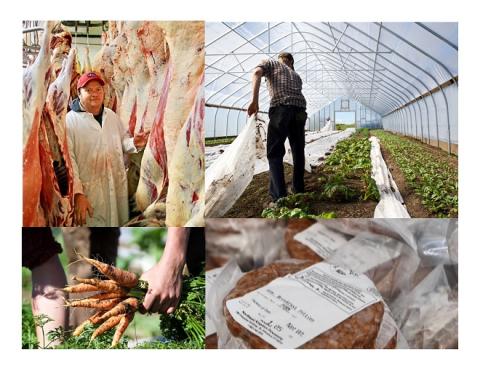Cultivating Organic Practices for a Thriving Farm and Community
Cultivating Organic Practices for a Thriving Farm and Community
Date & Time: August 21, 2024 - 4:00 pm - 6:00 pm
Location:
Earth Sky Time Community Farm, 1547 Main Street Manchester, VT 05255
Description: Innovative organic practices contribute to a thriving diversified farm. Join for a workshop at Earth Sky Time Community Farm aimed at commercial growers of all scales and see some of the farm's many organic practices at work. Tour the farm with Bonnie and Oliver of Earth Sky Time, along with Becky Maden, UVM Extension Nutrient Management Specialist, to learn about how their 5 acres of no-till permanent beds are maintained without disposable plastics, understand their method of planting soil blocks on bare ground with a water wheel transplanter, mulching crops with a modified manure spreader, green chopping adjacent pasture for mulch, prepping beds with specialized equipment, and irrigating with a modular system. Plus, meet Vermont Organic Farmers staff to ask your burning organic certification questions and learn about the Transition to Organic Partnership Program. This workshop earns one RAP Agricultural Water Quality education credit.
To learn more & register: https://www.nofavt.org/events/cultivating-organic-practices-thriving-farm-and-community-0
Organized by: NOFA-VT
To learn more, contact: Hannah Sporn, hannah@nofavt.org

